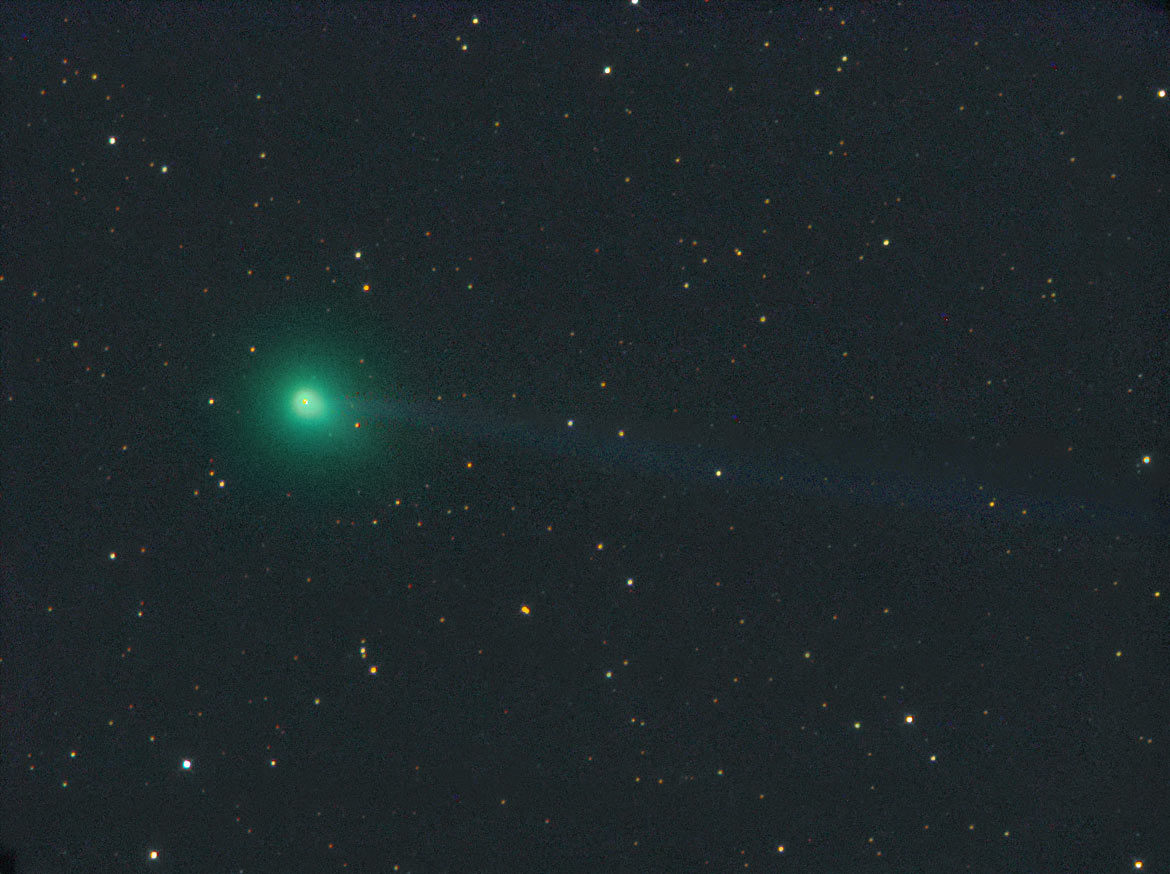That's the situation this spring with Comet C/2009 R1 (McNaught). Even so, observers in the Northern Hemisphere should be able to pick it up with telescopes, and possibly binoculars, just before dawn for at least part of June, during its runup in brightness.

Comet Timetable
As of mid-May the comet was about magnitude 8.5 (compared to the 10 we originally predicted), as it rose about an hour before the start of astronomical twilight for mid-northern observers. Throughout this apparition it will be low in the east or northeast when dawn begins to brighten.
May 31st will find McNaught, now hopefully 6th or 7th magnitude, passing 2½° southeast of the 2nd-magnitude star Beta Andromedae. At the beginning of astronomical twilight it's a respectable 20° up as seen by observers at 40° north latitude. But the waning gibbous Moon will brighten the sky.
On the morning of June 5th the comet skims just north of the large, loose open cluster NGC 752. On June 6th and 7th it's within about 2° of the 2nd-magnitude double star Gamma Andromedae. The Moon is much thinner then, but also closer to the comet.
Mid-June is when Comet McNaught should be most interesting, offering the best compromise between its increasing brightness and its decreasing altitude at the start of dawn. Moreover, the sky will be free of moonlight.
The helpful conjunctions continue as the comet passes about 1° north of the open cluster M34 in Perseus on the morning of June 10th, and 3° south of 1.8-magnitude Mirfak (Alpha Persei) on the 13th. It's still about 15° high in the northeast as the sky starts to grow light on June 15th, but it appears roughly 1° lower every day after that. The comet passes zero-magnitude Capella on the 21st, and it's very low by the 24th, when it passes 2nd-magnitude Beta Aurigae. By now Comet McNaught may be as bright as 4th or 5th magnitude, but moonlight is returning.
The comet will be lost to view by June's end - just before it reaches perihelion on July 2nd, 0.405 astronomical unit from the Sun. It remains far from Earth throughout this apparition, never venturing closer than 1.135 a.u. (in mid-June). After perihelion it will fade rapidly as it heads to the far-southern sky.
The comet is approaching on a hyperbolic orbit, which means that it's making its first trip in from the Oort Cloud. So its brightness is even less predictable than usual. Will it flare unexpectedly or perhaps fizzle right out?
Print out our map, plan where and when to look (find when astronomical twilight begins at your location using our almanac, and don't forget to check the Daylight Saving Time box if necessary), and see for yourself.
Check on recent pictures and light curve.
Many McNaughts
This particular Comet McNaught is one of 54 (and counting) named for Robert H. McNaught of Australia's Siding Spring Observatory. He works in the Siding Spring Survey, funded by NASA to record large swaths of sky to find potentially hazardous near-Earth objects. The survey also turns up many other moving objects. McNaught found this comet (which will never come near Earth) at 17th magnitude on an image taken last September 9th. Pre-discovery images quickly established its orbit.
The most famous of the Comet McNaughts is C/2006 P1, also known as the Great Comet of 2007. It was an easy naked-eye sight when passing near the Sun in mid-January of that year, shining at magnitude - 5 or - 6, and in the following days it flung a gigantic, multi-banded tail across the Southern Hemisphere's evening sky.




Reader Comments
to our Newsletter